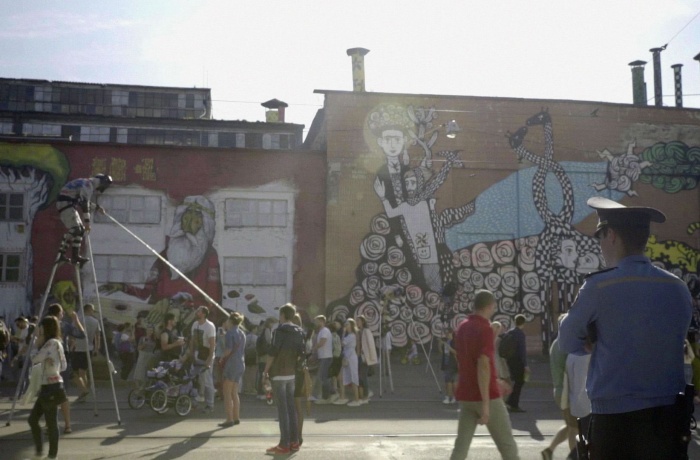
On 7 August, the new season starts on docuspace.org, which focuses on Belarus. Around the screening of the film Pure Art, we have prepared online meetings which will introduce us to the Belarusian art community and tell us more about the problems faced by contemporary Belarusian activists and human rights advocates.
All online streams will be available for watching in the original language at the festival YouTube channel, with simultaneous translation into Ukrainian – on docuspace.org and on the Docudays UA Facebook page.
LIVE STREAMS PROGRAMME
14 August at 7 p.m.
Shades of Protest: How does art help in the struggle for human rights?
Summer in Belarus has proven to be hot in all senses. Political tension, which was obvious in the pre-election period, was supplemented by social tension, caused by the COVID-19 pandemic. The situation was worsened by escalating government repressions. All these events pulled even the apolitical Belarusians out of their usual rhythm of life and pushed them to express their opinions.
Under these conditions, the Belarusian artists’ reaction wasn’t far behind. A prominent example is the opening of the Art Belarus Gallery with QR codes instead of paintings by famous artists from the collection of one of the presidential candidates. Why without the paintings? Because they have been seized by the government.This is the way in which Belarusian art responds to reality with its own language, despite censorship, human rights and liberties infringement, a kind of cultural vacuum.
What is happening with human rights in Belarus? How is censorship putting pressure on art? How does Belarusian reality affect the neighboring countries? And what happens to the lives of the artists in Belarus who do not stay silent and protest using art?
Speakers:
Moderator: Andriy Kulykov, journalist
21 August, 7 p.m.
Tête-à-tête: Maksim Shved & Maksim Karpitski
One of the famous slogans of the May protests in Paris in 1968 was a student reply to theorizing university professors: “Structures don’t take to the streets and don’t build barricades.” Meaning that freedom and the opportunity to change something are not in offices, galleries and audiences, but in open air, in squares, avenues and alleys.
The protagonist of Maksim Shved’s film Pure Art, the abstract artist Zakhar Kudin, also takes to the streets. Inspired by the colorful rectangles with which municipal workers paint over any writings on the walls of Minsk buildings, the artist creates abstract paintings in the open air. At the same time, this unusual art practice provokes passers-by to engage in dialogue—about art, about freedom, about history and about the shared future.
Filmmaker Maksim Shved and film critic Maksim Karpitski will discuss the political (in) cinema, art as a way to go beyond the limits of established structures, the phenomenon of municipal service art, streets and liberties.
26 August, 7 p.m.
DOCU/PRO talk. How do you make films in a country without a film industry?
At the meeting, Maksim Shved, the director of Pure Art, will share his experience of working on his film debut. Those were 7 happy years, from 33 until 40, when Maksim had to solve many interesting questions:
Main photo: a still from Pure Art